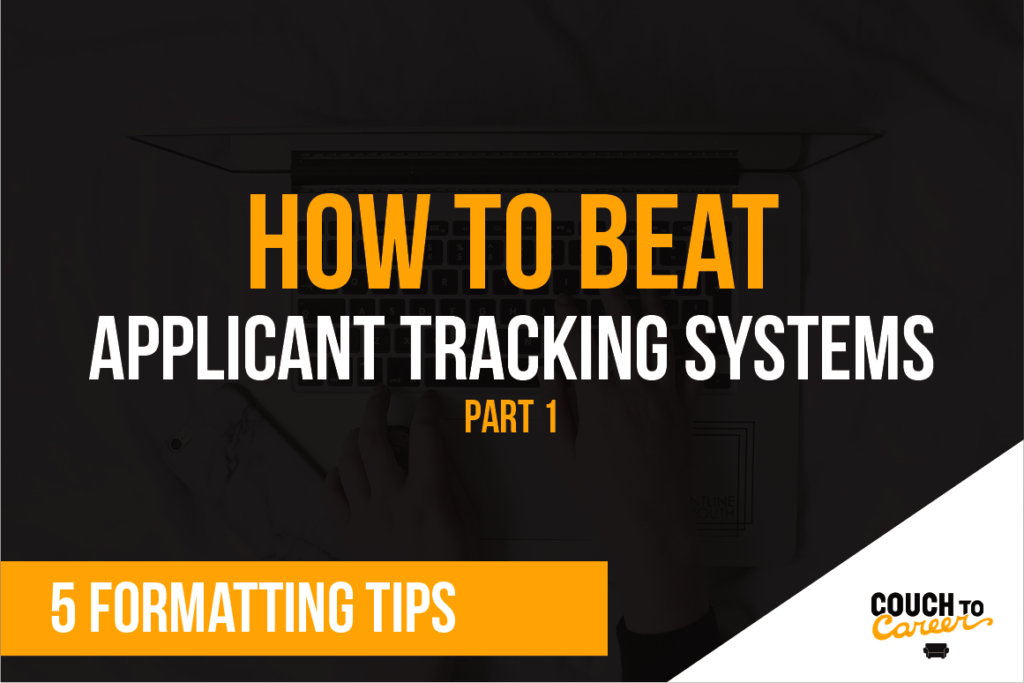As I mentioned in last week’s post, Applicant Tracking Systems are many job hunters’ worst nightmare. The “resume black hole” can be a total mystery, leading to lots of frustration and discouragement when trying to land a job.
Today I’ll walk you through one of the easiest and most important factors when dealing with online job portals—formatting. With a few quick tricks, you can optimize your resume for the robots and set yourself up for success.
When submitting a resume to an ATS, it’s important that you remember that you are feeding information to a machine. Unlike a human, a machine doesn’t care about design and aesthetics, which leads us to tip #1.
1. Have two versions of your resume—one for robots and one for real people
It may seem like more work now, but finding a format that’s ideal for both man and machine is difficult. Maximize your chances for success by tailoring your resume to the appropriate audience. Your “human” resume should look sleek, polished, and professional. A well-crafted resume shows the reader that you have attention to detail and take pride in your work. However, the “robot” resume has a different objective—getting you onto the shortlist. For the rest of this article, we’ll focus on your robot resume.
2. Less is more—removing robot roadblocks
Your headshot might be a nice touch to your human resume, but the ATS doesn’t need to put a face to a name. Some popular resume elements can trip up ATS systems, so it’s best to avoid any potential pitfalls and remove them altogether. These include:
- Headshots / Pictures
- Logos
- Symbols (standard round bullets are generally OK)
- Emojis (probably shouldn’t include these anyway!)
3. Structure—keep it simple
Multi-column layouts can be a nice way to display a lot of information in a clean and elegant way. However, these layouts can confuse an ATS. It’s recommended to stick to simple single-column layouts like this one. Tables and charts can also be stumbling blocks for Applicant Tracking Systems. Even Headers and Footers can be problematic. In general, aim for simplicity.
4. Don’t forget about fonts!
One of the smallest details of your resume can have a real impact on your job search. Unique font choices may not be recognized by an ATS, rendering some or all of your resume completely invisible to the system. Not good! Stick with common sans serif choices like Arial, Calibri, Helvetica, or Verdana. In terms of font size, 11 or 12 are safe choices.
5. File formats
Opinions vary on the best format for resumes, but generally .docx and PDF are widely accepted as safe options. If possible, submit both formats.
Wrapping it up
It can be discouraging to submit countless job applications with no results, but it’s even more demoralizing to learn that a formatting issue was the reason your resume was never seen by a human. With these tips, your resume will be robot-friendly and ready to go. Tune in next week for Part 2 of my series on How to Beat Applicant Tracking Systems focused on keywords.
- I Got 3x More Job Interviews by Not Applying (Here’s How You Can Too) - April 19, 2021
- What to Do When Laid Off During COVID-19 Pandemic |Here Are 5 Steps You Need to Take When Job Searching From Home - April 3, 2020
- How To Spell Resume | Keyboard Shortcuts for Correct Resume Spelling - December 13, 2019
